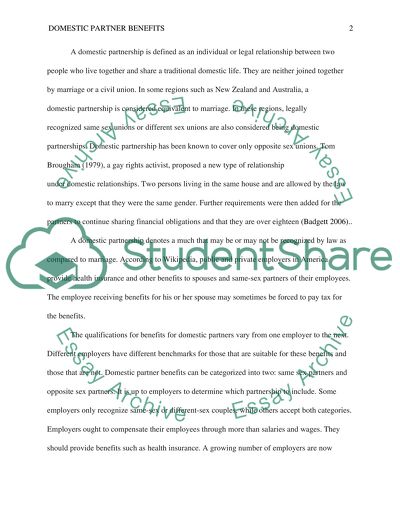Cite this document
(“Domestic partner benefits Essay Example | Topics and Well Written Essays - 1750 words”, n.d.)
Retrieved from https://studentshare.org/environmental-studies/1418355-domestic-partner-benefits
Retrieved from https://studentshare.org/environmental-studies/1418355-domestic-partner-benefits
(Domestic Partner Benefits Essay Example | Topics and Well Written Essays - 1750 Words)
https://studentshare.org/environmental-studies/1418355-domestic-partner-benefits.
https://studentshare.org/environmental-studies/1418355-domestic-partner-benefits.
“Domestic Partner Benefits Essay Example | Topics and Well Written Essays - 1750 Words”, n.d. https://studentshare.org/environmental-studies/1418355-domestic-partner-benefits.


